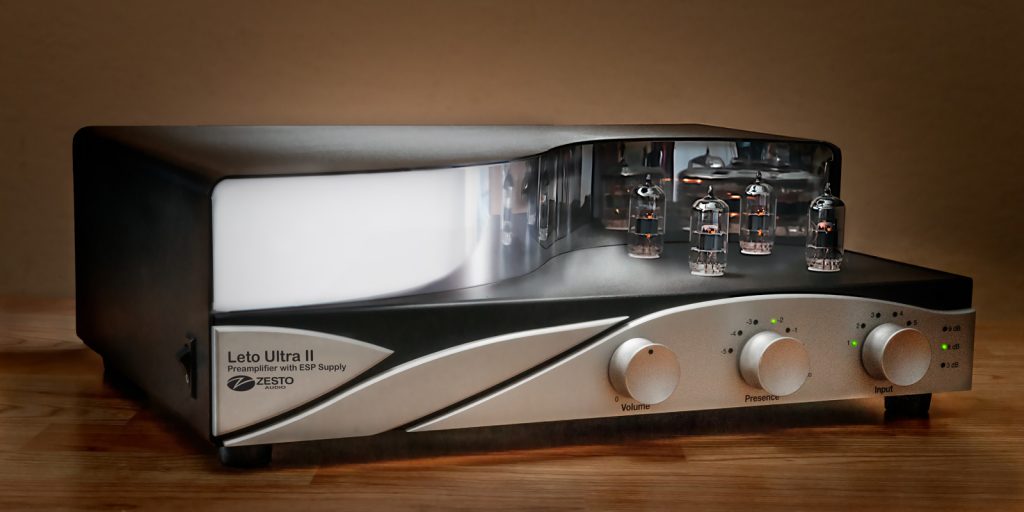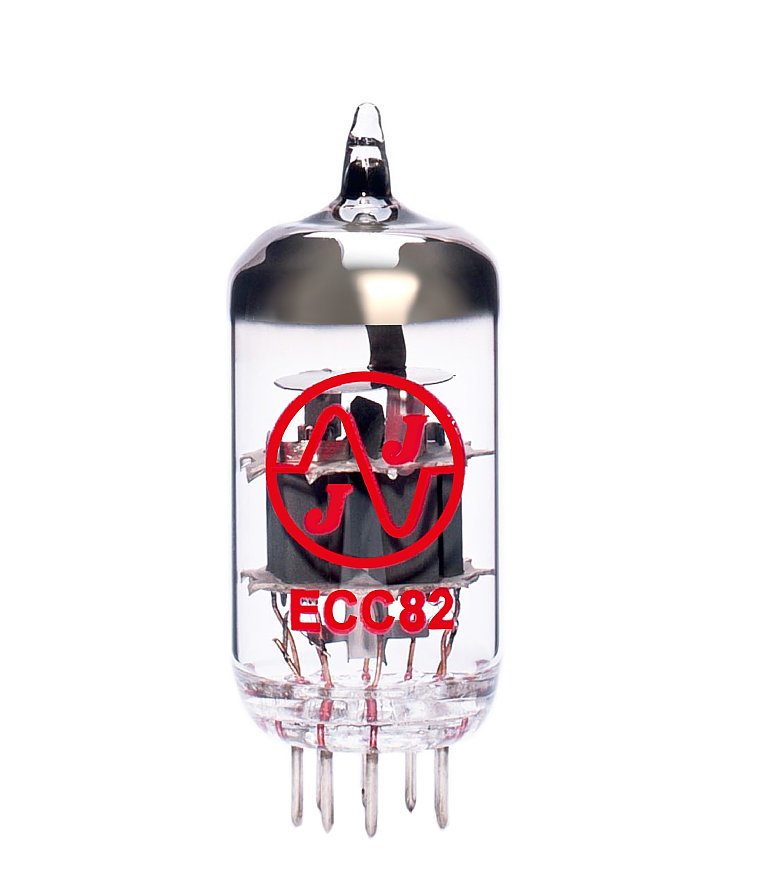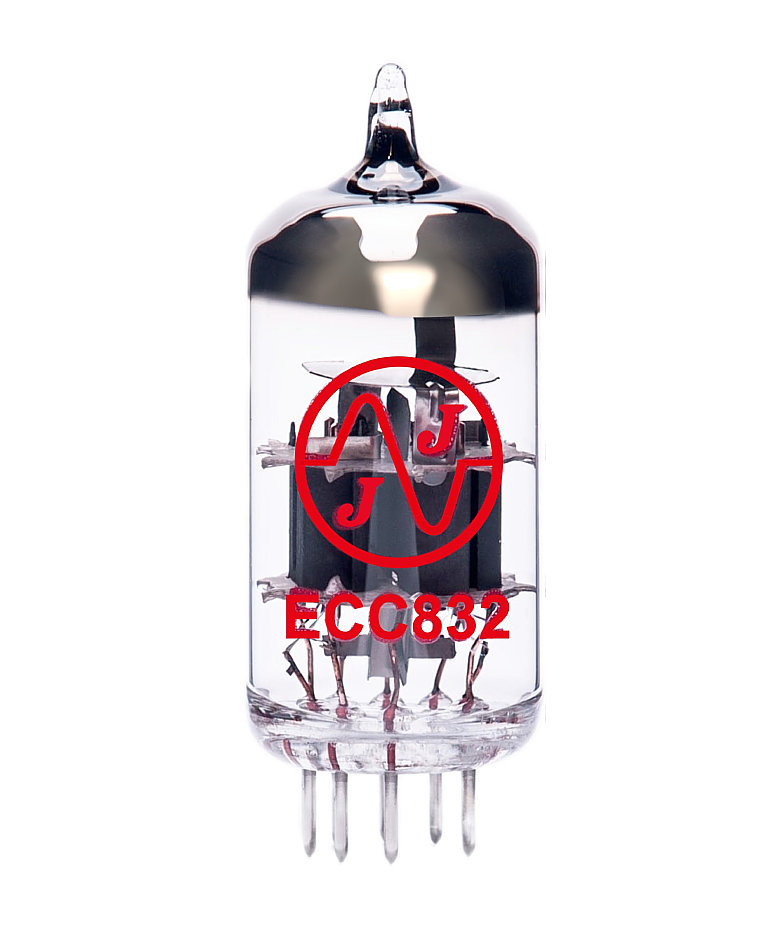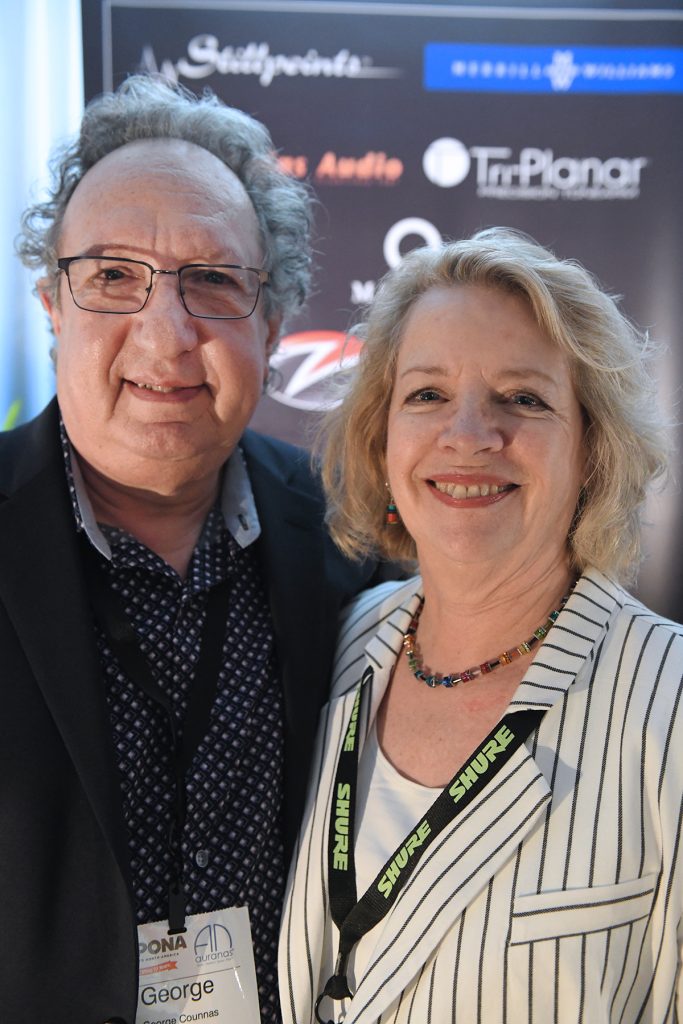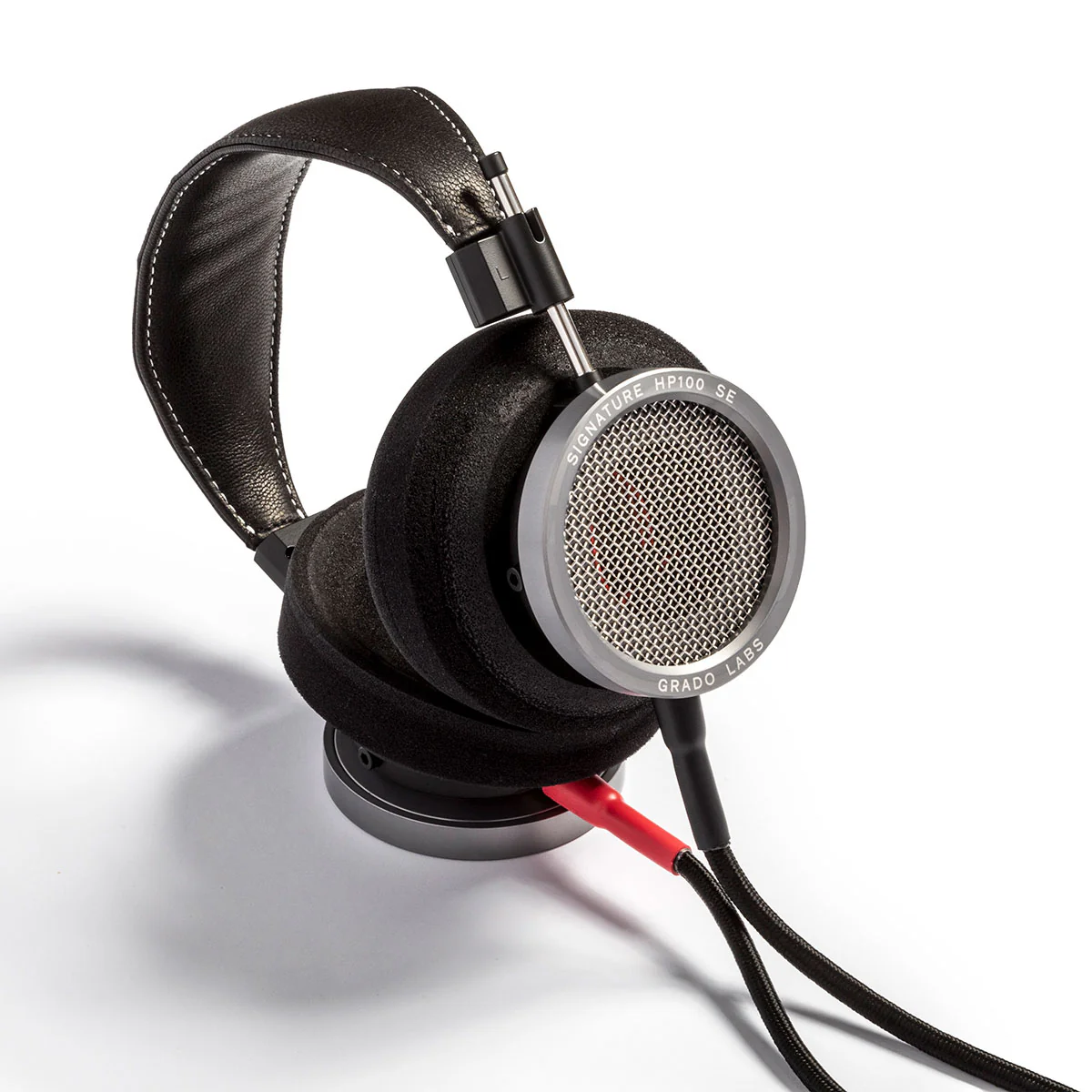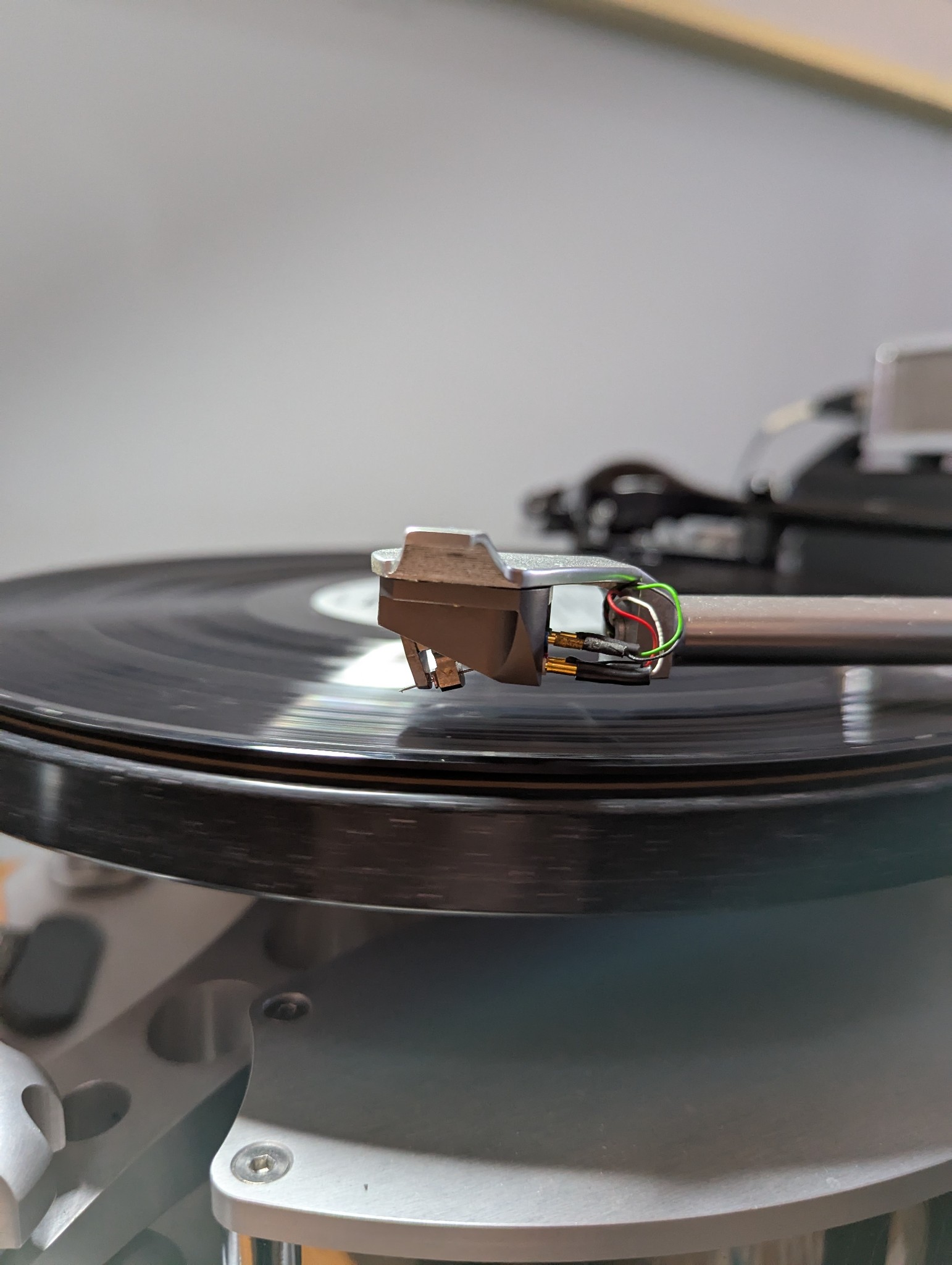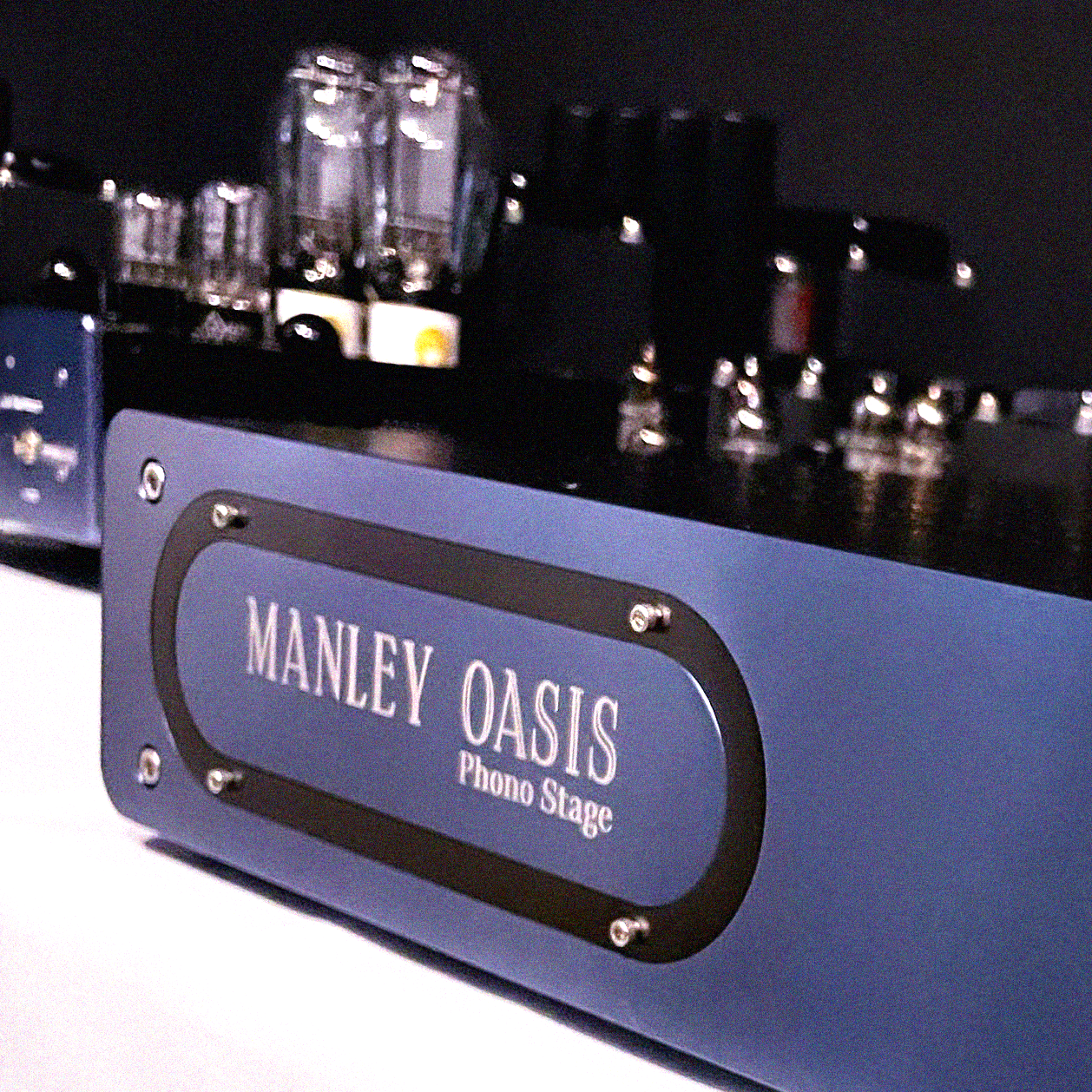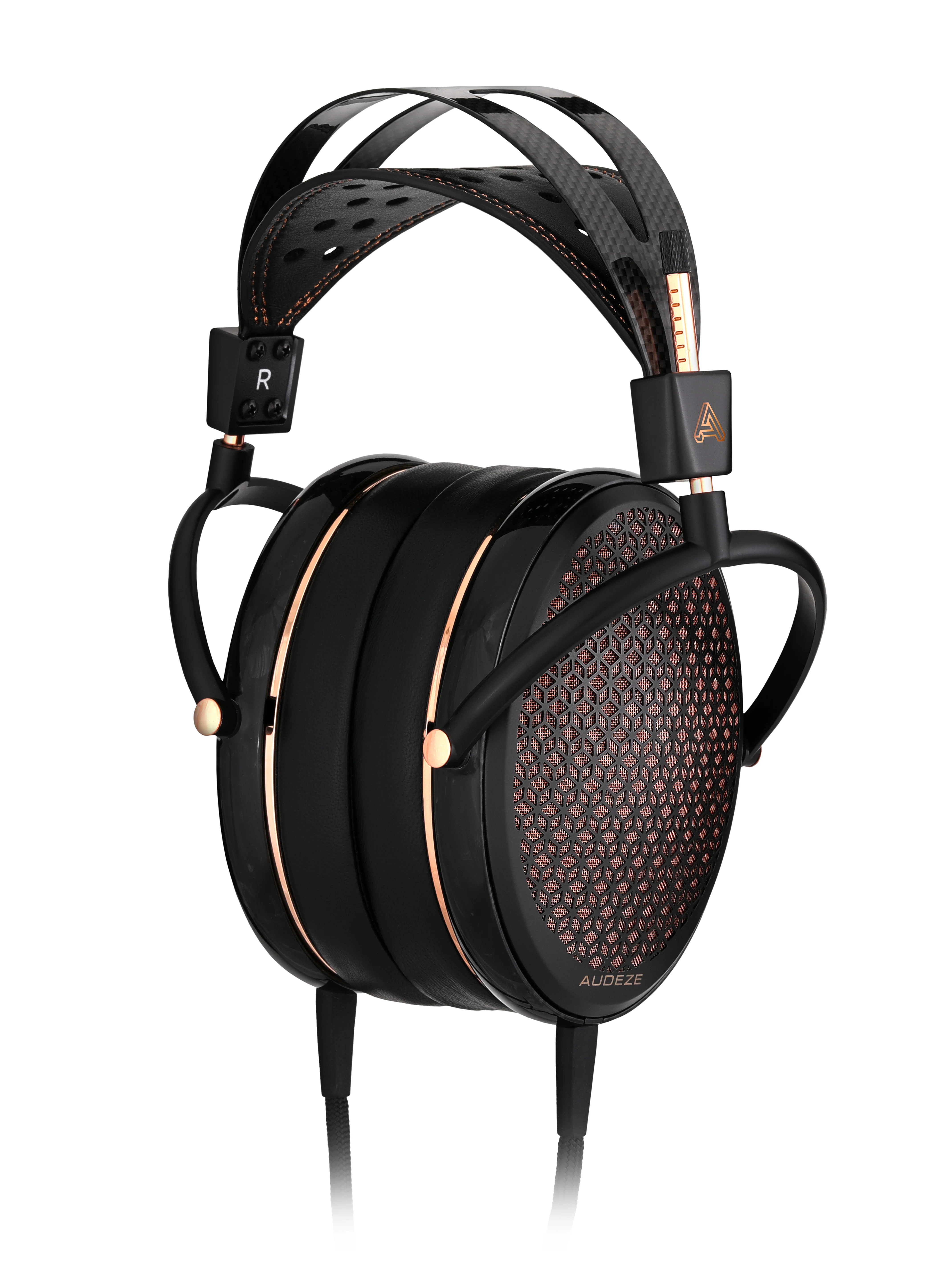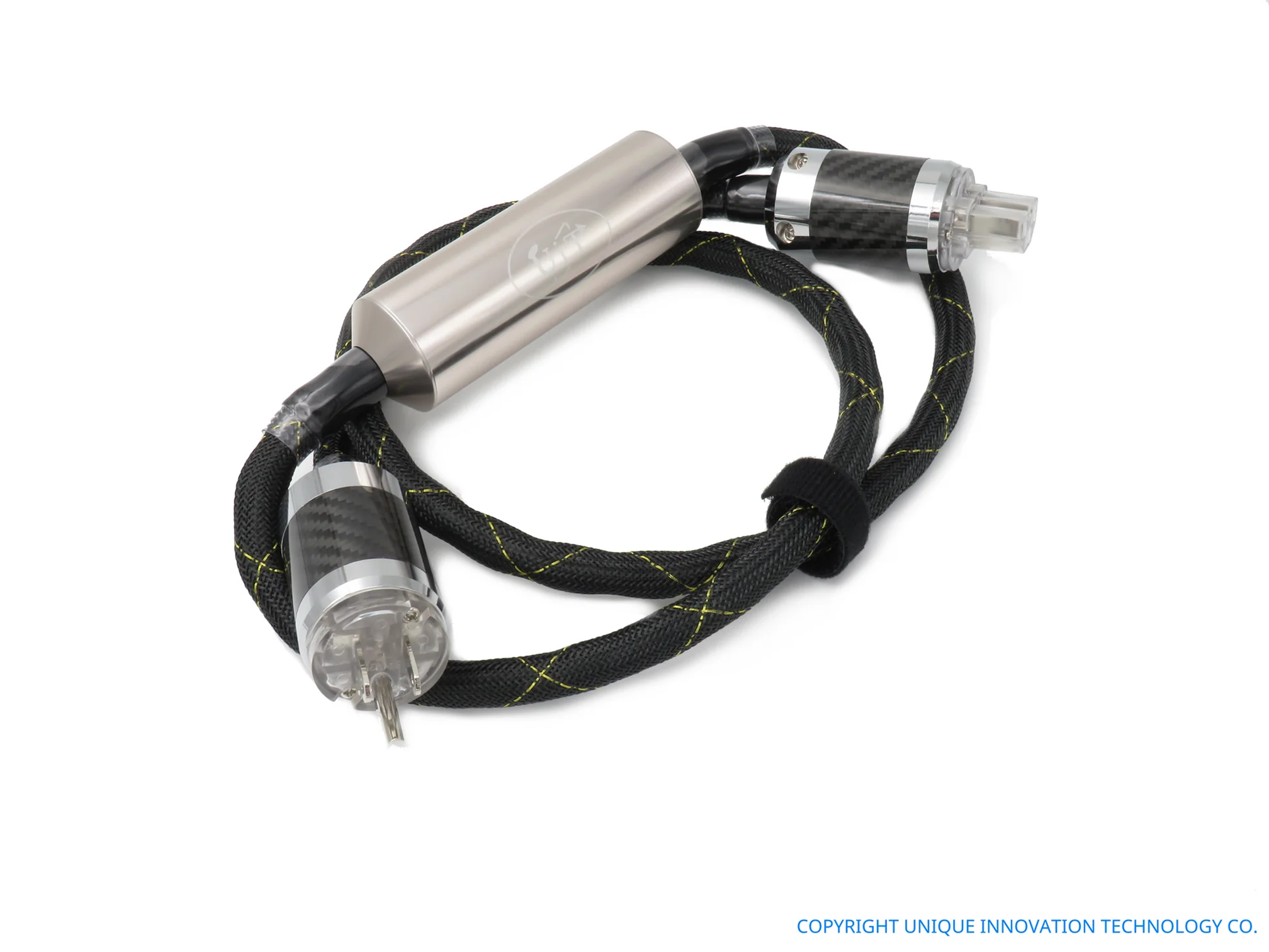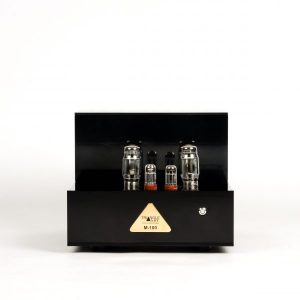The Zesto Audio Leto Ultra II Preamplifier
Now celebrating its 13th anniversary of producing award-winning all-tube designs for audiophiles, California's Zesto Audio has introduced its most advanced preamplifier to date. The Leto Ultra II Preamplifier is the amazing George Counnas's assault on the state of the art in all tube topology, and the third incarnation of the Leto series. This is an all-new design with many advanced circuit elements and user features not seen on previous models (or anyone else's for that matter), and therefore, has no upgrade path. I will state in all candor the Leto Ultra II took me by surprise. I was not expecting the Leto Ultra II to be a blockbuster entry to the world of ultimate tube preamps at its $11,900 price tag, but there it is: a preamplifier fully featured and designed, not by committee, but by the single uber-talented genius, George Counnas.
George Counnas: a portrait at AXPONA 2023 (photograph and image processing by David W. Robinson)
Over the last decade, JJ Tubes of Slovenia, an EU Member, has been improving its manufacturing skills and technical designs. They manufacture in a democratic country where profits and losses matter, where being RoHS Compliant means not polluting the environment, and where new tube models are taken extremely seriously. Owned by Sangita Jain, a very talented woman, this is a tube manufacturer succeeding against fierce Russian competitors.
I used to think there were no excellent small signal tubes made today by anyone, and that NOS tubes were the only real choice for audiophiles. This new Leto Ultra II has single-handedly changed my mind. The 12-volt tubes from JJ in their gold pin editions are truly excellent. They sound like a blend of Telefunken and Amperex A-Frame tubes of yore, with very linear response coupled with fine textural nuance. Their high output and low noise characteristics are winners in almost every modern design that I have tried them in. In classic pieces, they easily substitute for GE, RCA, Philco, Sylvania, Telefunken, Amperex, and more. Mullards are in their own category. I find them much more predictable with greater clarity and lower noise than any of the Russian or Chinese competitors.
JJ's 12AU7
As Zesto has matured with its designs over the last 13 years, so has JJ. With the Leto Ultra II Preamplifier and with JJ 12AU7s and 12DW7 Gold Pin editions, a "nexus" in musical reproduction has occurred. I found this to be true as well with the Zesto Audio Andros Deluxe II Phono Stage with JJ 12AX7s and 12DW7s. With Gold-Pin 12-volt JJ Tubes, we now have achieved consistent availability of truly musical current-production tubes and with the stability of an EU country as well.
...and here's the 12DW7
I understand from a dealer that McIntosh is featuring JJ tubes now along with other companies. This is good news.
Back to the Zesto Audio Leto Ultra II Preamplifier.
I referred to the new 12DW7 tubes which are being beautifully produced by JJ Tubes. This is actually a venerable design produced by GE in the 1950s that plays an important role here. It is a single envelope the size of a 12AX7 which contains half of a 12AX7 and half of a 12AU7. Designed originally for 12-volt portable radios, it was exclusively used in guitar amps. Until now, that is. Zesto Audio is one of the only high-end audio designer to use the new tubes and has found them amazing. They reduce the number of tubes needed on the chassis by two, thus reducing substantial circuitry and noise. This is new to the Leto series, and partly responsible for catapulting the design to its level of sublimely low noise.
Features on Rear
- Power ON/OFF switch: Turns the unit ON/OFF (located on the side panel).
- Inputs 1, 2 & 3: RCA single-ended (SE) High quality recessed gold pin connectors
- Inputs 4, 5 & 6: XLR True floating balanced transformer inputs. (BAL)
- Outputs 4 sets: Two sets of RCA SE & 2 sets of XLR transformer balanced outputs
- Left and right Ground ON/OFF switch: Connects or disconnects the ground to the Single-Ended outputs
- Gain push button switch: Just in case your remote is misplaced.
- IEC Power entry connector: 110 to 120V AC power input. (optional factory installed 220 to 240V mains)
The unique feature incorporated in the rear of the preamp is the selectable Ground Switches. There is one per channel, left and right Ground ON/OFF switch: Connects or disconnects the ground to the single-ended outputs. You merely switch each to eliminate any hum or noise in a particular output. It is genius and not available on any other manufacturer's designs I know of at any price.
Features on Front
- Left Knob is the Volume Control.
- The volume goes from 0 to 10 and is indicated by the black dot on the front of the knob.
- There are no LED indicators.
- Volume is adjusted manually by turning the knob or with the remote control.
- Adjust the Gain so your normal operating volume is around 12 o'clock. Center Knob is the Presence Control & Mono.
- The "0" position is the Leto Ultra Preamp without any Presence features.
- In the "0" position Presence is not connected to the circuit.
- Center knob defaults to "0" when it's turned on.
- Center knob defaults to "0" when you change inputs.
- Presence can be adjusted manually by turning the knob or with the remote control.
- Mono is adjusted by Pushing-in this knob, do not turn to adjust.
- The "Mono" function is indicated by the LED.
- Mono combines the left and right inputs.
- The best use of the Mono feature is in setting up your system to establish a good center image and troubleshooting for phase problems.
- Mono can be used for old Mono cartridges that have only one output. Right Knob is the Inputs Control & Mute.
- You have 6 inputs. 1 to 3 are Single Ended and 4 to 6 are Balanced.
- Inputs are adjusted manually by turning the knob or with the remote control.
- Inputs can be adjusted on the "fly" with a slight delay and a small mechanical click from the relays.
- While switching inputs the unit will go to Mute momentarily.
- Inputs and Gain settings are linked and will remember your last Gain settings for each input that has been set for more than 30 seconds. This is a useful feature when you have, as an example, a high output DAC and low output phono.
- Mute: The Unit will default to Mute when first turned on indicated by a yellow.
- Adjusted with remote LED.
- Push in this knob to adjust the "Mute" function. Don't turn the knob to manually adjust Mute, that will change your inputs gain
- LEDs will cycle through the three gain positions 3 dB, 6 dB, and 9 dB.
- Adjust with the remote "on the fly."
- The Manual Gain adjustment is a push button found on the rear panel next to the IEC mains connector.
- Adjust the Gain so your normal operating volume is around 12 o'clock.
The "Presence Control" is another exclusive feature of the Leto Ultra II. Activated easily from the remote control or the front of the preamp, it will make magical adjustments to gently or dramatically eliminate high-frequency noise. It will also work like a loudness control at low volumes. I would rather have this Zesto control on a preamp than a 33-band active octave equalizer! The only preamp in the world that has this, it works anecdotally as follows:
In the zero position it is out of the circuit completely.
In the first position, it very, very gently rolls off the extreme highs, then, while still substantially in the high-band "shelves" the curve and stops its effects. It does not affect the bottom of the high band or the midrange. This gets rid of digital crispies or other very high-band recording anomalies without affecting the textural information or depth perspective. Fantastic!
In the second position, it very gently removes even more problematic high distortion but shelves or stops the curve at the bottom of the high band. It works brilliantly to remove digital noise and bad old Columbia sizzle. It does NOT affect the midrange, reduce depth or sound staging, imaging, or anything but high-frequency problems. The Stradivarius on the older Columbia sounds more clearly defined and images with greater richness than before. Again, fantastic!
In the third position, it gently rolls off the highs and just barely intrudes into the midrange before shelving. No more severe digital problems here and for LPs that are rolled off in the bass, it is a winner. What does not occur is the depth and imaging are untouched! It just makes a crappy recording sound like a very good one. Fantastic on mono LPs that are noisy and most all Toscanni recordings! A great but still gentle filter leaving the music intact.
In the fourth and fifth positions, you have in my opinion, a superb loudness control. The highs and upper midrange are rolled off leaving various levels of lower midrange so you may increase the overall volume and still maintain midrange and bass definition and impact. Best loudness control I have ever used.
The presence control can be activated on the fly from the remote, so if something in the recording becomes annoying, push the button. This is the most repeatable, reliable high-band filter in the industry and moves the Leto Ultra II to the state-of-the-art in my book.
The Leto Ultra II, with the exclusive use of the 12DW7 tubes and other proprietary circuit changes, is the quietest, most noise-free tube preamp I have ever heard. Backgrounds are now jet black. Images pop in their space and the space between instruments is empty of any noise or grain. I have heard this effect on expensive high-end solid-state preamps, but never on tube units. I believe this is a ground-breaking accomplishment not one I expected in my lifetime.
A Bit About Set-up
The Leto Ultra II needs 200 hours of run-in time to fully break in the poly caps. Zesto Audio put 50 hours on the Leto before shipping to assure top quality.
When it comes to power cords, the Leto reacts a bit differently to each brand. I tried everything I had in stock, and found the Cardas Clear Beyond Power Cord brought out the finest performance elements of the design. Not a surprise, of course: the Cardas is a top-notch high-performance AC Power Cord. Thank you Angela Cardas for furnishing the power cord.
I utilized the Zesto Audio Andros Deluxe Phono Stage with the Stein Music Aventurin V6 Mk2 MC Cartridge and the London Reference MM Cartridges. Digital streaming is provided by Qobuz with my EAR DAC 4 and Mac Mini Max. I used an outboard drive for my personal library.
My USB Reference Cable is the active USB Cable from UITaudio, the best I have heard to date. Interconnects included UITaudio, Cardas Clear Beyond, RSX Technologies, Jorma Origo, Kubala-Sosna Emotion and Elation, and Kimber Select 1036 both RCA and XLR.
The Performance
Bob Levi at the LAOC Gala Banquet, 2022 (photograph and image processing by David W. Robinson)
I could tell you more about the performance, except I could not tell if the Leto was in the circuit. Yes, I could activate the many controls, play with the amazing Presence Control, switch inputs silently, and even mute and unmute silently, but I have no idea what it actually sounds like. I really enjoyed setting the output levels to maximize the different input levels but I heard no differences between the output levels themselves other than volume. The only time I could really identify colorations was when I switched NOS tubes for the supplied JJs.
GE 12DW7 tubes dramatically warmed the presentation and rolled off the top end noticeably.
The overall performance became a very old-fashioned tube sound. These were expensive matched low-noise NOS tubes, by the way. I replaced the JJ tubes and the fantastically neutral performance returned.
I also tried Mullard 12AU7 tubes which had the same effect, with possibly even a more tuby sound overall. Being extremely low noise and expensive tubes, the low noise performance of the Leto was still obvious in the rather more syrupy presentation.
With digital sources, I could clearly identify the bit rates and the quality of the recording techniques. My Qobuz stream at 24/192 was clearly superior to anything less. My personal recordings on the outboard drive were possibly a bit better in direct comparison. Recordings in DSD were better than any of my PCM pieces. The Leto Ultra II is a clear lens on the source.
My reference LPs were stunning and dramatically realistic. All of the colors and drama of the recordings were catapulted to my ears. It was the musical energy and definition I would have said only master tapes played in the room could provide, and yet, there it was. If the recording was warm and rich, I heard warm and rich. If it is was musical but laid back, ditto. I remember commenting to audiophiles I invited to audition the Leto that I was unaware my amplifiers were so neutral and highly defined, and that they could perform so revealingly.
Duke Ellington, Ellington Indigos, reissued by Impex Records
I was delighted, thanks to Abey Fonn and Bob Donnelly of Impex Records, to receive the 45rpm test pressings of Ellington Indigos being released next year. It marks the 65th Anniversary of the album and will be badged with the 30th Anniversary of the Los Angeles and Orange County Audio Society. It was as alive as being there. My 1958 original paled by comparison. This was the master tape on a disk, and probably the best reissue I have ever heard. The Leto Ultra II did it justice and then some. Its bold sound and rock-solid imaging were incredible. The bass was deep, layered, and alive. The Duke's piano playing was really texturally right and melodic. There was the tiniest tape hiss which I was unaware of after the first note of music. The master tape elements were in top shape and mastered in Bernie Grundman's Studio. I heard the whole recording, and the Leto Ultra II made it perfect.
I recently reviewed one of those expensive solid-state preamps that also appeared completely neutral. The Leto Ultra II sounds the same plus tubes. The tubes, in comparison and in this design, do not slow things down at all. The rise-time of the preamps appears the same. What I hear is a bit more heart with the Leto tubes. The Leto communicates the music with a touch more textural nuance. It is still very neutral but simultaneously allows more of the musical colors to emerge.
Does the music sound more real, more alive with the Leto? I believe so. As much as I was awed by the exceptional solid-state preamp, the Leto Ultra II was more satisfying without ever revealing its own intentions.
Quibbles
None.
George and Carolyn Counnas at AXPONA 2023 (photograph and image processing by David W. Robinson)
Summary
With a presentation so convincingly and musically right while remaining totally neutral, the Leto Ultra II Preamplifier is the best tube preamp I have ever heard or reviewed. It lets the source determine all the details while it merely manipulates the outcome to the amplifier. I was stunned to hear a tube preamplifier as quiet and musically adept as any great solid-state piece. The Leto's fantastic imaging and wonderful sound staging are just state-of-the-art and the production of depth without distortion is shocking. It is, without a doubt, the quietest tube preamplifier on the market I know of today. Though its price is not inconsiderable, I wonder why anyone would pay more and receive only more complex heavier boxes.
I am so totally sure about the extraordinary performance of the Leto Ultra II that I bought the review sample. It will now be used in my reference system to judge all future preamplifier designs. As far as I am concerned, the Zesto Audio Leto II Preamplifier is the best of the best, and most highly recommended.
Leto Ultra II Preamplifier
Retail: $11,900
Zesto Audio
3138 Calle Estepa
Thousand Oaks, CA 91360
Engineering: George Counnas
805.807.1840
Contact Sales and Marketing: Carolyn Counnas
805.807.1841




